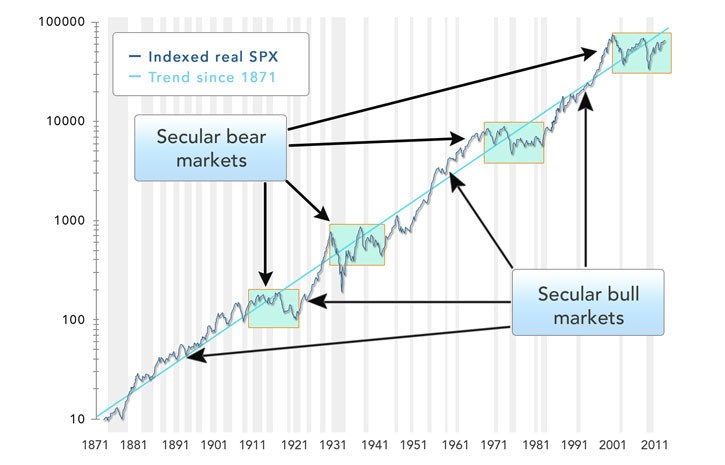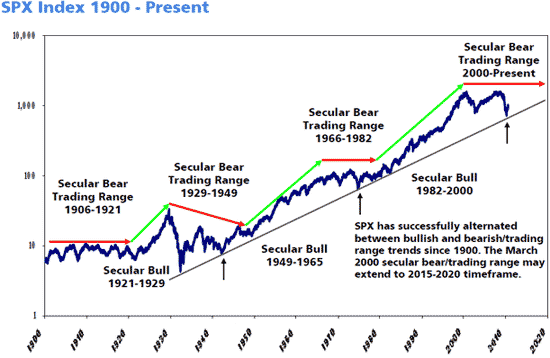Bear Market Definition
Post on: 20 Июль, 2015 No Comment

Bear markets refer to a downward trend in the stock market. The length of that downtrend determines whether it is a secular or cyclical bear market.
A secular bear market is characterized by below average stock market returns by the S&P 500 for a long time, typically 10 to 20 years. Periodic bull markets spring up within a secular bear market until the next cyclical bear market takes over and carries the market to even lower lows. A cyclical bear market refers to one that lasts a few months to a few years.
Many factors can drive bear markets: weak economy, low consumer confidence, high unemployment, low stock valuations and low earnings, and all-around pessimism and uncertainty.
Bear Market Definition: Why is a Bear a Bear?
- Consistent decrease in stock prices.
- Poor economy.
- Geographic and political uncertainty.

Interestingly, one of the longest bear markets in U.S. history developed after the longest bull market in history. It began in with a collapse with the technology bubble in 2000, followed by world economic effects arising from the 9/11 attacks in 2001 and stock market downturn of 2002.
From 2007-2009, the Dow Jones Industrial Average, Nasdaq Composite and S&P 500 all experienced declines more than 20% from their peaks in late 2007. Then in 2008, subprime mortgage loans and credit default swaps ushered in the collapse of financial institutions and subsequent bursting of the real estate bubble.
Bubbles refer to a situation when asset prices are inflated and not based on fundamental values, i.e. the technology bubble in 2000, real estate bubble in 2008, and the first recorded speculative tulip bubble in 1637. Single tulip bulbs sold for more than 10 times the annual income of a skilled worker and then suddenly collapsed.
Some bear markets occur without warning; others happen gradually. It’s important not to let your investments continue to slide, hoping that prices will eventually rebound. Once a position drops below your risk tolerance, sell it. Trillions of dollars in retirement accounts were lost in the bear market of the 1990s when stocks were allowed to hit rock bottom.
The safest place to put your assets in a bear market is a money market, interest bearing accounts, bonds, sometimes gold. There are options to short the market—betting that it won’t go up—but that approach is riskier than seeking out safe havens to ride out a bear market.














